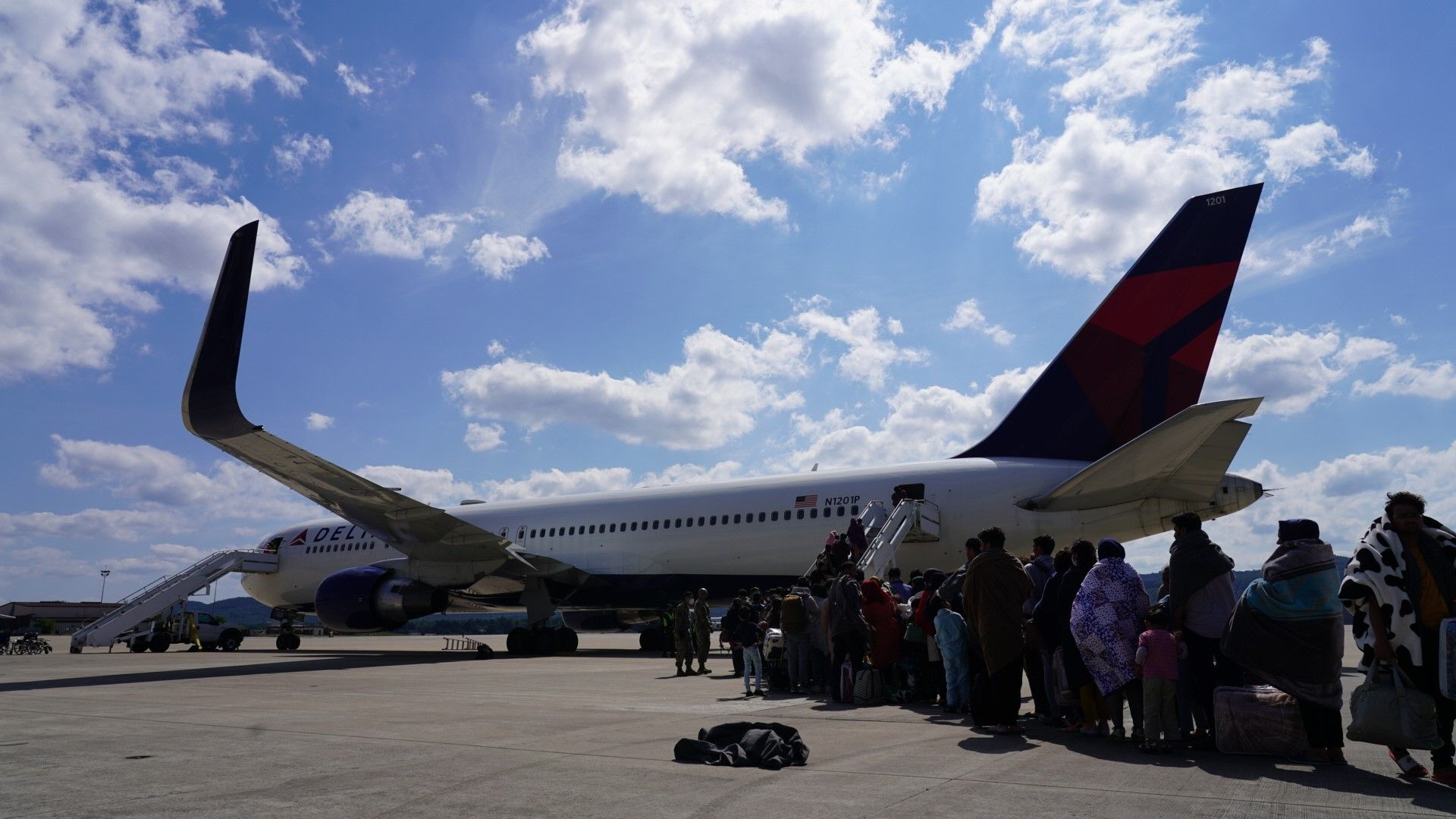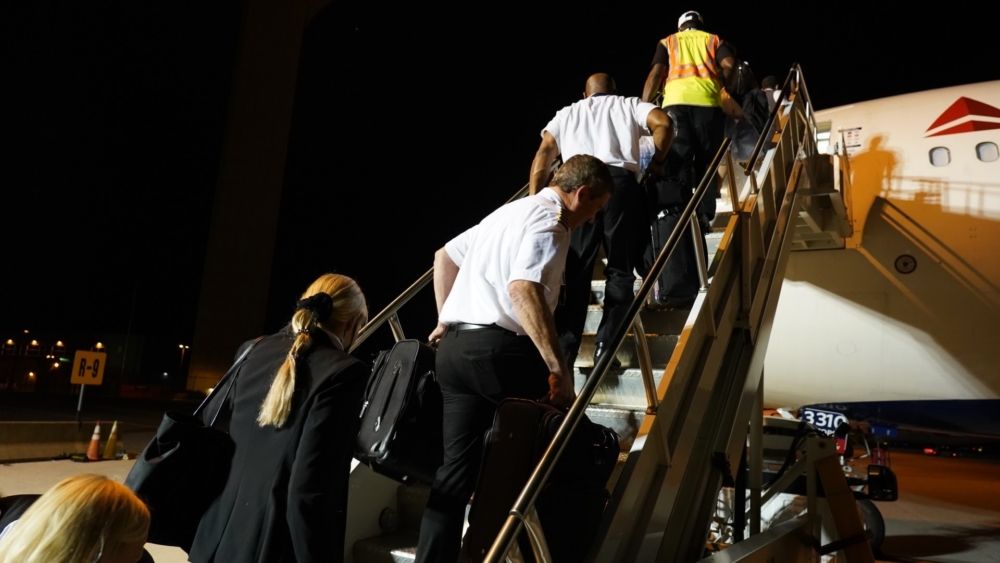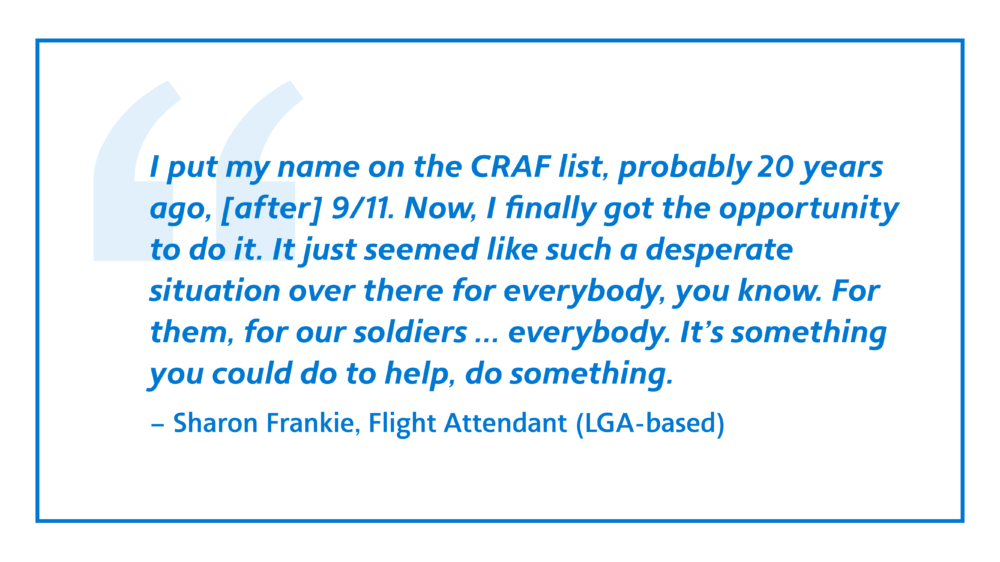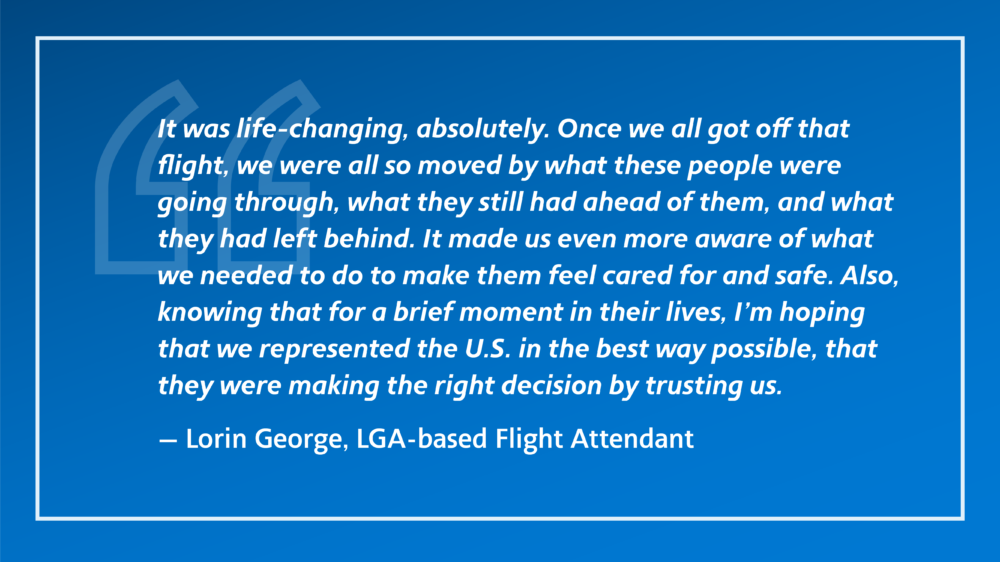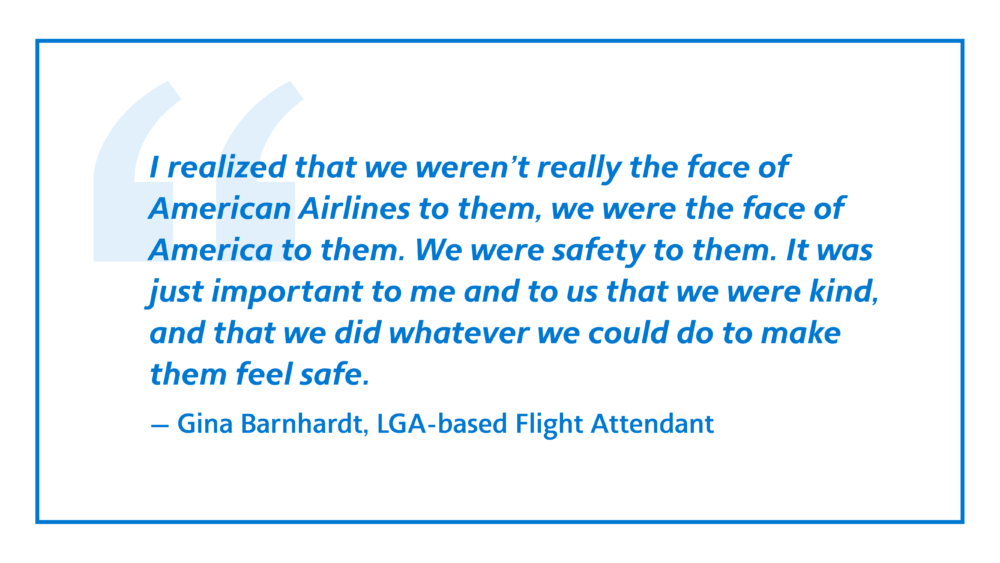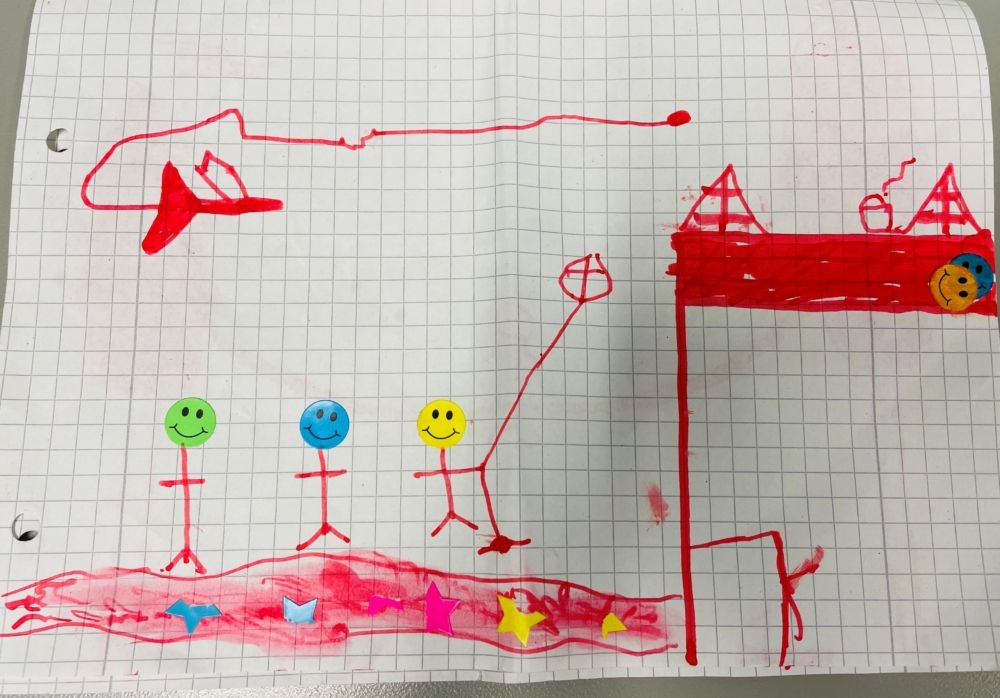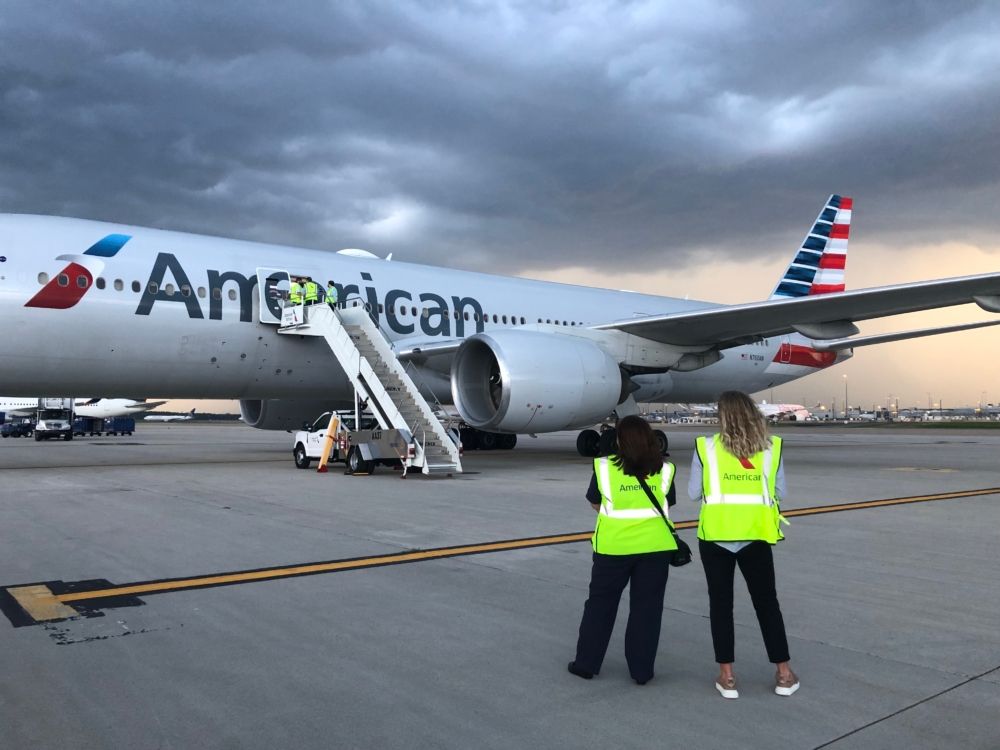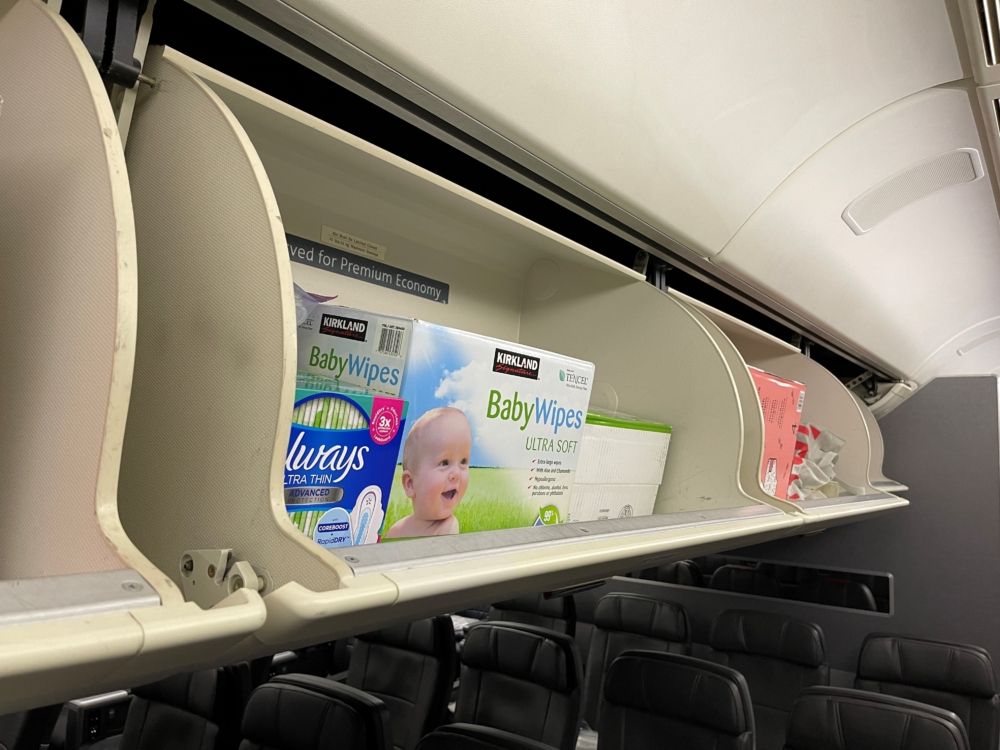The evacuation from Afghanistan is ongoing. While the flights may only be a few hours, it is clear that the impact of the flights and the mission on airline crews and employees will last for a lifetime. The humanitarian mission has seen young children, young adults, and older Afghan refugees and US citizens leaving the country cross paths with crews on special flights running under the Civil Reserve Air Fleet (CRAF) activated by the Department of Defense (DOD).
The special nature of the flights
Flying a CRAF flight is very different from flying a traditional commercial flight. Generally, airline crew will be flying to or from a hub airport to a spoke airport. Planes are arriving and departing from terminals at airports, and customers are paying customers traveling to visit family, go on business, or take a long-awaited vacation.
However, on a CRAF flight, flights are arriving and departing from special airports. This can include military bases, but also some commercial airports. In the United States, Philadelphia and Washington-Dulles are accepting CRAF flights. But, most of the flights bringing people to the US are coming from military bases that have served as temporary housing bases for refugees.
The passengers getting onboard these aircraft are coming from very different backgrounds. The one factor that most people have in common is that they are leaving Afghanistan after the Taliban's rapid takeover of the country. This includes US citizens and their families and allies in Afghanistan that supported the US mission. For many people, this means packing whatever of their life they could in a couple of suitcases and ran to the airport.
Even for the crew working the flight, the planes are not always met at a jetbridge. This means a ride to the plane in a vehicle, taking the stairs up to an aircraft, and arriving and departing at times that might otherwise not be normal for the flight attendants.
Passengers stepping onboard are not coming with itineraries booked weeks or months in advance for a trip. Some are boarding without proper suitcases because they had to pack their belongings in whatever is available. All of this weighs heavily on the crew, and this is reflected in the way they describe working on this mission.
Airline crews reflect on the mission
CRAF missions have left an impact on many airline crews. Several airline crewmembers have taken their stories public to describe the special nature of these flights. Sharon Frankie, a LaGuardia-based flight attendant for American Airlines, stated the following:
Lorin George, another LaGuardia-based flight attendant, also stated:
Finally, Gina Barnhardt, also a flight attendant based at LaGuardia, reflected on the mission as it related to being an American Airlines flight attendant:
Bonita Elbert, a Delta Air Lines In-Flight Service Program Manager, described how she tried to make the flights more comfortable for passengers. With a background in counterterrorism before joining Delta, she was eager to be a part of the mission and discussed the following actions she took:
During my quick layover in Mainz, Germany, I went from store to store trying to find coloring items that would be enough for every child on the plane. I didn’t want anyone to feel left out and had heard of crews running out of items because of how many children have been on these flights. I finally settled on buying markers and notebooks knowing I could at least hand out pieces of paper and one marker per kid for them to draw to their heart's content.
Delta pilot, Alexander Kahn, appeared on CNN's New Day program to discuss what it is like flying under this mission:
A pilot for United Airlines, First Officer Zak K., has a history in Afghanistan. He recorded the following message while preparing to work one of the missions:
A different situation on the ground
Even on the ground, the situation of handling aircraft arrivals is totally different with CRAF missions. While planes are landing at Philadelphia (PHL) and Dulles (IAD), they are not the same as commercial arrivals. One of the first examples is that some arrivals are not arriving at a proper terminal, meaning passengers have to be deplaned from a remote position.
Then, after heading into the airport, passengers have to be cleared to enter the United States. This can take several hours, leading to backups at some airports. Some passengers need to wait to receive clearance before entering the United States. Some will even be taking further flights to other points in the United States as either temporary staging areas or for US citizens to get back to their homes.
For example, Philadelphia has created space for arrivals to wait for clearance to enter the United States, a place for prayers, and a place for health screening. Arrivals are also able to receive a vaccine at the airport – just another example of the varied nature of running a humanitarian mission in the middle of a different kind of crisis.
Inbound passengers also need to have their basic needs fulfilled. As passengers did not have a lot of time to prepare for the mammoth journey to the US, airline employees are running to stores to pick up diapers, formula, snacks, and personal hygiene products for arrivals.
Some airlines are also loading these products onboard aircraft headed to Europe. This requires a lot of coordination between flight crew, ground staff, and logistics support. All of this is on top of the traditional safety and passenger comfort requirements airlines have to meet.
Working humanitarian flights like these are a once-in-a-lifetime event. The crew working these flights are not just flight attendants, pilots, or ground staff, but they are some of the first faces evacuees see on their way to the United States. This is a huge responsibility, but the crew raising their hands to work on these flights are up to the task and taking a bold step.
Have you worked on a CRAF flight? What was your experience like? Let us know in the comments!

